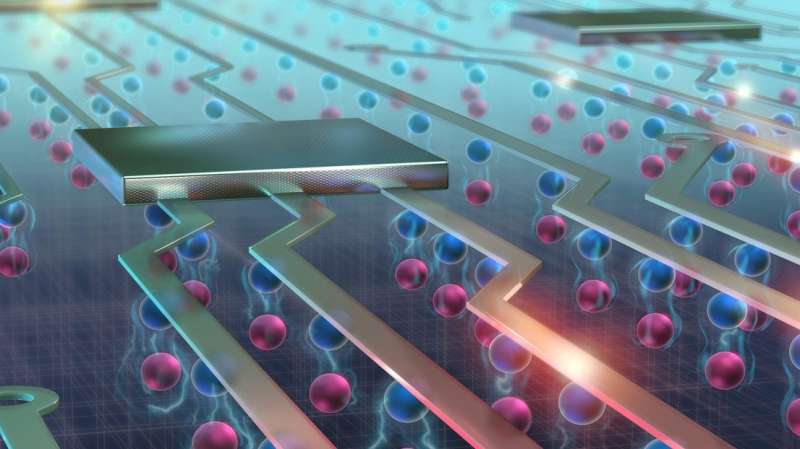Excitons pave the way to higher-performance electronics

After developing a method to control exciton flows at room temperature, EPFL scientists have discovered new properties of these quasiparticles that can lead to more energy-efficient electronic devices.
They were the first to control exciton flows at room temperature. And now, the team of scientists from EPFL's Laboratory of Nanoscale Electronics and Structures (LANES) has taken their technology one step further. They have found a way to control some of the properties of excitons and change the polarization of the light they generate. This can lead to a new generation of electronic devices with transistors that undergo less energy loss and heat dissipation. The scientists' discovery forms part of a new field of research called valleytronics and has just been published in Nature Photonics.
Excitons are created when an electron absorbs light and moves into a higher energy level, or "energy band" as they are called in solid quantum physics. This excited electron leaves behind an "electron hole" in its previous energy band. And because the electron has a negative charge and the hole a positive charge, the two are bound together by an electrostatic force called a Coulomb force. It's this electron-electron hole pair that is referred to as an exciton.
Unprecedented quantum properties
Excitons exist only in semiconducting and insulating materials. Their extraordinary properties can be easiliy accessed in 2-D materials, which are materials whose basic structure is just a few atoms thick. The most common examples of such materials are carbon and molybdenite.
When such 2-D materials are combined, they often exhibit quantum properties that neither material possesses on its own. The EPFL scientists thus combined tungsten diselenide (WSe2) with molybdenum diselenide (MoSe2) to reveal new properties with an array of possible high-tech applications. By using a laser to generate light beams with circular polarization, and slightly shifting the positions of the two 2-D materials so as to create a moiré pattern, they were able to use excitons to change and regulate the polarization, wavelength and intensity of light.
From one valley to the next
The scientists achieved this by manipulating one of the excitons' properties: their "valley," which is related to the extremes of energies of the electron and the hole . These valleys – which are where the name valleytronics comes from – can be leveraged to code and process information at a nanoscopic level.
"Linking several devices that incorporate this technology would give us a new way to process data," says Andras Kis, who heads LANES. "By changing the polarization of light in a given device, we can then select a specific valley in a second device that's connected to it. That's similar to switching from 0 to 1 or 1 to 0, which is the fundamental binary logic used in computing."
More information: Alberto Ciarrocchi et al. Polarization switching and electrical control of interlayer excitons in two-dimensional van der Waals heterostructures, Nature Photonics (2018). DOI: 10.1038/s41566-018-0325-y
Journal information: Nature Photonics
Provided by Ecole Polytechnique Federale de Lausanne




















